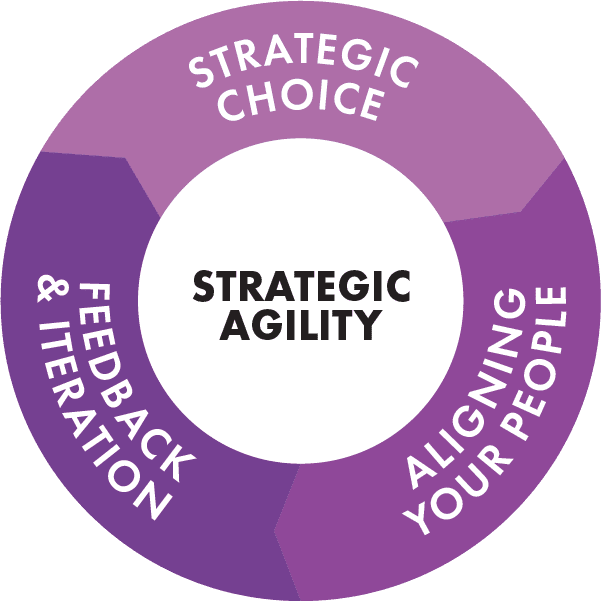Strategic Agility: Navigating Change in a Dynamic Environment

Table of Contents
Strategic Agility In today’s fast-paced and ever-evolving business landscape, organizations must adapt quickly to remain competitive. Strategic agility is the ability of an organization to anticipate, respond to, and capitalize on changes in its environment. This article explores the concept of strategic agility, its key components, and how businesses can develop this essential capability.
Understanding Strategic Agility
Strategic Agility is more than just quick decision-making; it encompasses a holistic approach to managing change. It involves recognizing opportunities and threats in the market, aligning resources effectively, and fostering a culture of innovation and adaptability. Organizations with high strategic agility can pivot quickly in response to market shifts, technological advancements, and emerging trends.
The Importance of Strategic Agility
- Rapid Market Changes: In industries like technology, consumer preferences can shift overnight. Companies that can quickly adjust their strategies and offerings are more likely to thrive.
- Increased Competition: Globalization and digital transformation have intensified competition. Agile organizations can outperform their rivals by swiftly responding to market demands.
- Innovation and Growth: Strategic Agility encourages a culture of continuous improvement and innovation. This leads to new products, services, and business models that can drive growth.

Key Components of Strategic Agility
1. Vision and Leadership
Effective leadership is critical for fostering strategic agility. Leaders must communicate a clear vision that inspires and motivates employees. This vision should be flexible enough to accommodate changes in the external environment while providing a stable foundation for decision-making.
2. Culture of Adaptability
An organization’s culture plays a significant role in its agility. Companies should promote a mindset that embraces change and encourages experimentation. Employees should feel empowered to propose new ideas and challenge the status quo without fear of failure.
3. Data-Driven Decision Making
Access to real-time data enables organizations to make informed decisions quickly. Implementing robust data analytics tools allows businesses to analyze market trends, customer behavior, and operational performance, helping them respond effectively to changes.
4. Collaborative Ecosystems
Strategic agility thrives in environments where collaboration is encouraged. Building partnerships with other organizations, stakeholders, and even competitors can provide valuable insights and resources. Collaborative ecosystems foster innovation and enable faster responses to market shifts.
5. Continuous Learning and Development
To remain agile, organizations must invest in the continuous learning and development of their workforce. Training programs, workshops, and mentorship initiatives help employees acquire new skills and adapt to changing roles within the organization.
Strategies for Enhancing Strategic Agility
- Scenario Planning: Organizations should engage in scenario planning to anticipate potential future developments. This involves creating multiple plausible scenarios and developing strategies for each, allowing businesses to respond proactively.
- Feedback Loops: Establishing feedback loops ensures that organizations can learn from their successes and failures. Regularly collecting and analyzing feedback from customers, employees, and market trends enables continuous improvement.
- Flexible Organizational Structures: Hierarchical structures can hinder agility. Adopting flatter organizational structures or cross-functional teams can facilitate quicker decision-making and collaboration.
- Technology Adoption: Leveraging technology, such as cloud computing and artificial intelligence, can enhance operational efficiency and enable faster responses to changes.
- Customer-Centric Approach: Keeping the customer at the center of strategic decisions is essential. Understanding customer needs and preferences allows organizations to adapt their offerings and strategies more effectively.
Conclusion
Strategic agility is crucial for organizations aiming to thrive in a complex and rapidly changing business environment. By fostering a culture of adaptability, investing in continuous learning, and leveraging data-driven insights, companies can position themselves for sustained success. As the landscape continues to evolve, those who embrace strategic agility will be better equipped to navigate uncertainties and seize new opportunities.



:max_bytes(150000):strip_icc()/TermDefinitions_crypto_final-940e93a6cb5341999a5d735fbf04fbfe.png?w=300&resize=300,300&ssl=1)
